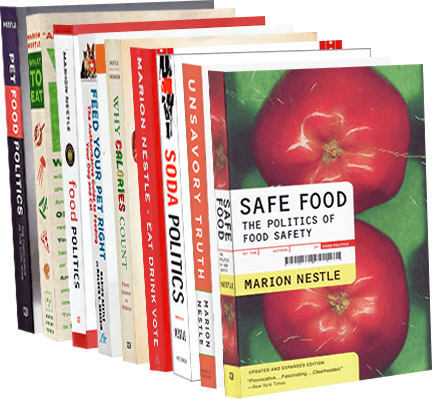I wish I could answer all the questions that come in under Feedback but the one from Sophie about the recent recall of Nutro pet foods is on my mind, not least because it is so mysterious.
Some history: As I discuss in Pet Food Politics, Nutro brands were caught up in the melamine recalls in 2007. The company initially recalled several lines of dog and cat foods. When owners reported animals sick from eating brands that had not been recalled, Nutro recalled others. In the wake of that mess, the company was sold to Mars Petcare (yes, the maker of M&Ms) later that year.
The present fuss: Since then, more than 800 pet owners have complained to a website, ConsumerAffairs.com, that their pets got sick or died after eating Nutro products. Consumer Affairs’ Lisa Wade McCormick followed up by contacting the FDA and filing a Freedom of Information Action (FOIA) to see what the agency had on consumer complaints about Nutro. Someone at the FDA told her they were denying her FOIA request because Nutro was under investigation. But then the FDA said it was not investigating Nutro. But then, people who contacted Consumer Affairs said the FDA had talked to them about their sick pets. So was the FDA investigating Nutro or not?
While Consumer Affairs was trying to figure this out, Nutro announced its “voluntary” recall of dry cat foods, found to contain “incorrect levels of zinc and potassium…resulting from a production error by a US-based premix supplier.” Translation: The FDA does not have recall authority; all recalls are “voluntary.” Zinc and potassium are essential minerals. Vitamins and minerals in pet foods – or breakfast cereals for that matter – are added as pre-manufactured mixes.
The Nutro press release says the company has had not gotten any consumer complaints about the recalled products but that cat owners should watch out for loss of appetite, refusal of food, weight loss, vomiting, or diarrhea. These are precisely the symptoms that have been reported to Consumer Affairs over the last couple of years and that might be expected from zinc poisoning.
So how much zinc was in the pet food? The company press release did not give the amount of zinc found in its products. Neither did the FDA. The FDA announcement merely said that the premixes contained too much zinc and too little potassium. Lisa McCormick, however, reports that levels of zinc in Nutro dog (not cat) foods were once found to contain 260 parts per million (ppm). The AAFCO standard for zinc in cat foods is 75 ppm dry weight. For dog food it is 150 ppm.
Would a level of 260 ppm be dangerous? Nobody really knows. According to the most recent National Research Council report, not enough information is available to establish a safe upper limit, but 260 ppm seems like it ought to be within tolerable limits. But maybe it’s not? For humans, the recommended intake level is about 10 mg/day with an upper limit of 40 mg/day.
So what is going on here? In this, as in anything having to do with pets, I defer to Christie Keith, who writes about pets for petconnection.com and for the San Francisco Chronicle. In her recent column on the Nutro business, she lays out the issues as only she can do:
Call me crazy. Call me a dreamer. Call me a radical progressive liberal socialist. Or instead, call the real FDA a failure as a watchdog on the American food supply – both human and animal – that it was created to protect…this was and is a story about the safety of Nutro foods…But I think there’s a much bigger story here. The FDA works for us. We pay its bills. And it’s supposed to ensure the safety of the American food and drug supply for both people and animals…[The result is that] Nutro is left to mop up after a PR mess made all over the Internet, pet owners have no idea what to believe or what pet food to buy, and the FDA has nothing more to say. We lose. Our pets lose. Even the pet food companies lose. And that’s the story.
Let’s hope that the facts emerge soon. In the meantime, a few conclusions seem clear.
For pet owners: Don’t buy recalled Nutro products for your pets (the list is in the press releases from Nutro and the FDA). Insist that Nutro and every other pet food company give you information about what’s in the foods, how they know the amounts are correct, and what their test results show.
For pet food companies: Know your suppliers and test every every ingredient. If you want your customers to trust your products, release the test results on your websites.
For the FDA: Take pet foods seriously. I keep insisting that we only have one food supply, and it’s the same for animals, pets, and people. If the melamine recalls taught us anything, it is that if something is wrong with pet foods, people foods will be in trouble too (recall: melamine in Chinese infant formulas). And how about being more transparent about what you are doing? That too might help instill trust.
For the government: How about funding some research on the dietary needs of dogs and cats. The more we know about their nutrient needs, the more we will know about our own.
For everyone: Insist that the companies that make foods for people and pets tell you what is in their products, where the ingredients come from, whether they are testing, and what the results of those tests might be.
This is why pet food politics matter (and why I went to the trouble of writing a book about the melamine recalls).


